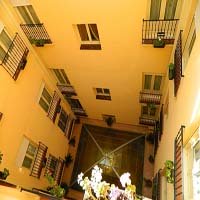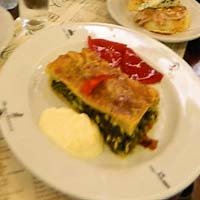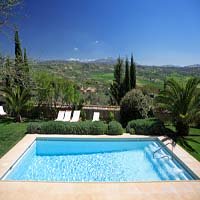Spanish Art Reflects the Country’s History, Culture and Traditions
It might not jump out at you at first (unless you’re an art historian or a fine arts enthusiast), but when you think about it, Spain’s contribution to the visual arts has been a lot more significant than you’d expect from a country its size. Although Spain is known for its many great painters, it has also produced several fine sculptors over the years.
The names of several Spanish painters reverberate throughout the art world. El Greco, Velázquez, Murillo, Goya, Miró, Picasso – they’re just a few of the country’s renowned artists. Their works are counted among the world’s most celebrated paintings.
Spanish art is such a strong part of the culture, so expressive, so tightly woven in with the country’s history and traditions, that it alone draws countless travelers to the country every year.
Here’s some information about different types of Spanish art, set out in chronological order. Many of the specific painters mentioned have works on display in the galleries of Madrid’s famed Museo del Prado.
(Very) Early Spanish Art
When it comes to art, you can’t get any earlier than prehistoric cave paintings. Spain features several, including the first ones ever discovered. They’re located at the Cave of Altamira, near Santander in northern Spain’s Cantabria region.
The cave’s walls and ceiling are so beautifully and extensively covered with paintings of wild animals and human hands that it’s often referred to as “the Sistine Chapel of cave painting.” But in addition to having the first cave art to be discovered, Spain also has the earliest art discovered so far, located in Cantabria’s El Castillo cave. Because it dates to about 40,000 years ago, you could almost say the Spanish invented art!
Moorish “Art”
You probably weren’t expecting this to go that far back in time, so let’s move on to a much more recent era. The walls of many buildings constructed by the Moors during their nine-century domination of Spain (711-1492) are decorated with magnificent, highly stylized designs and motifs. Some Moorish buildings are adorned with designs carved into the stone used to construct them, while others feature marvelous colored mosaics created out of tiles that were skillfully applied, one by one, over the stone walls.
Although not technically considered “art,” it’s reasonable to think of these designs and other adornments as “architectural art.” Moorish mosques, palaces and other structures are scattered throughout Andalusia - the heart of Moorish power in Spain. The Alhambra and Generalife palaces in Granada are perhaps the best-known examples and attract millions of visitors every year, but Córdoba also offers a number of beautiful Moorish buildings that amaze everyone who sees them.
The Next Big Leap in Spanish Art – the “Golden Age”
The modern origins of Spanish art can be traced to beautiful Medieval-era illuminated manuscripts and murals. From there, Spanish art blossomed into its so-called “Golden Age” – the 16th and 17th centuries.
Some of the world’s most renowned and beloved painters created magnificent masterpieces during this period. Murillo, Ribera, El Greco and Velázquez are all names that resonate strongly with art lovers throughout the world. Goya came along slightly later, in the 18th century, but his paintings are every bit as exquisite as those of his predecessors. Depictions of scenes from the Bible, religious and quasi-religious figures, and portraits of wealthy patrons were common topics during this period.
Spain’s 20th Century Masters
As was true for the 16th, 17th and 18th centuries, some of the 20th century’s most famous painters were Spanish. Even people who don’t appreciate art have heard of Pablo Picasso - in addition to being one of the most innovative painters of the last century, Picasso was a highly accomplished sculptor. He isn’t the only modern Spanish master, though – far from it. Gris, Miró and Salvador Dali were also major players in the art world during the last century. Abstract, Impressionist and Surrealistic paintings were the focus of much of Spain’s art during the 20th century. Topics ranged from colorful floral arrangements and geometric shapes to abstract portraiture to the horrors of the Spanish Civil War (Picasso’s immense, extremely powerful Guernica).
Styles and Themes
Spanish art includes a wide range of styles and themes. Religious and quasi-religious themes were common during the Golden Age of Spanish art, in keeping with the way Catholicism played (and continues to play) a vital role in the lives of the Spanish people. El Greco’s altarpieces and other works are perfect examples of Spain’s religious art.
Moorish “architectural art” typically features geometric patterns or floral motifs, although they’re often highly stylized. Visual depictions of the human body or face are forbidden under strict Islamic law (they’re viewed as idolatry), so you won’t see any artwork portraying Mohammed or any other Muslim religious figure at any of Spain’s beautiful Moorish mosques.
Some Spanish painters worked in a more or less realistic style (Velázquez, for example), but other Spanish artists are counted among the greatest Impressionists that ever lived (Pablo Picasso is the obvious example). Miró qualifies as one of the world’s most prominent members of the Surrealism school of art. And then there’s Salvador Dali … a Catalan artist whose works are so surreal that some of them almost defy description.
Spanish art is both beautiful and memorable. In Spain, art’s mark on society is deep and indelible, reflecting the unique history, culture and traditions of the country.
More on Spanish Culture...
Football in SpainReturn from Spanish Art to Spanish Culture
Copyright© southern-spain-travel.com All Rights Reserved. Content Protected By DMCA.
Authentic Spain Food
It's true! Get tapas, jamon, olive oil, manchego and chorizo shipped directly from Spain
Get Football Tickets
Click here to buy tickets to Spains Sports events
Book a Hotel






New! Comments
Have your say about what you just read! Leave me a comment in the box below.